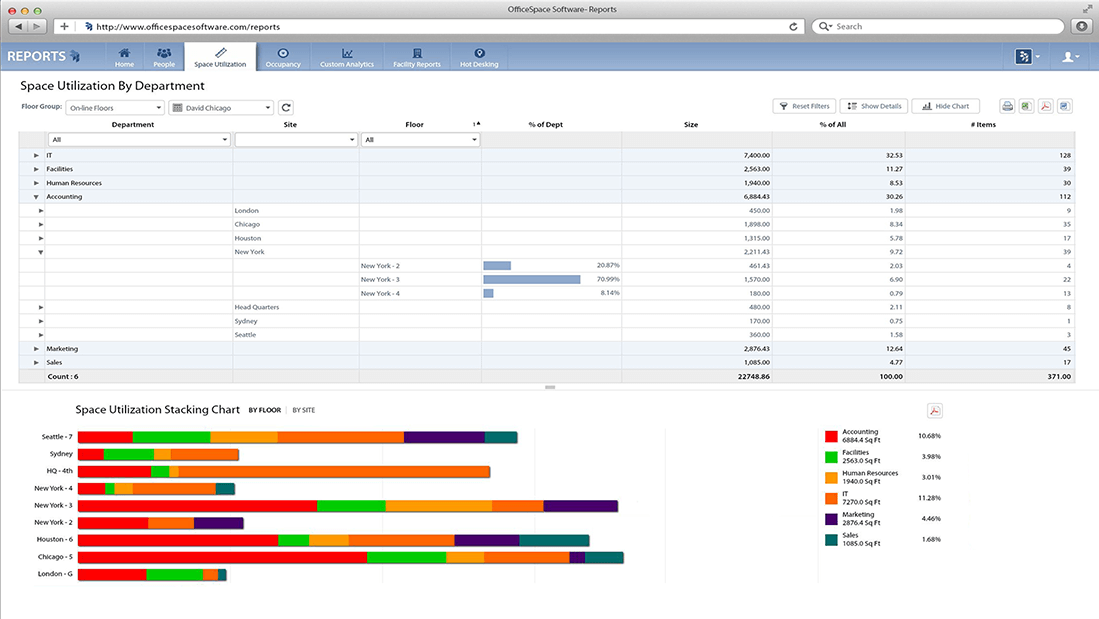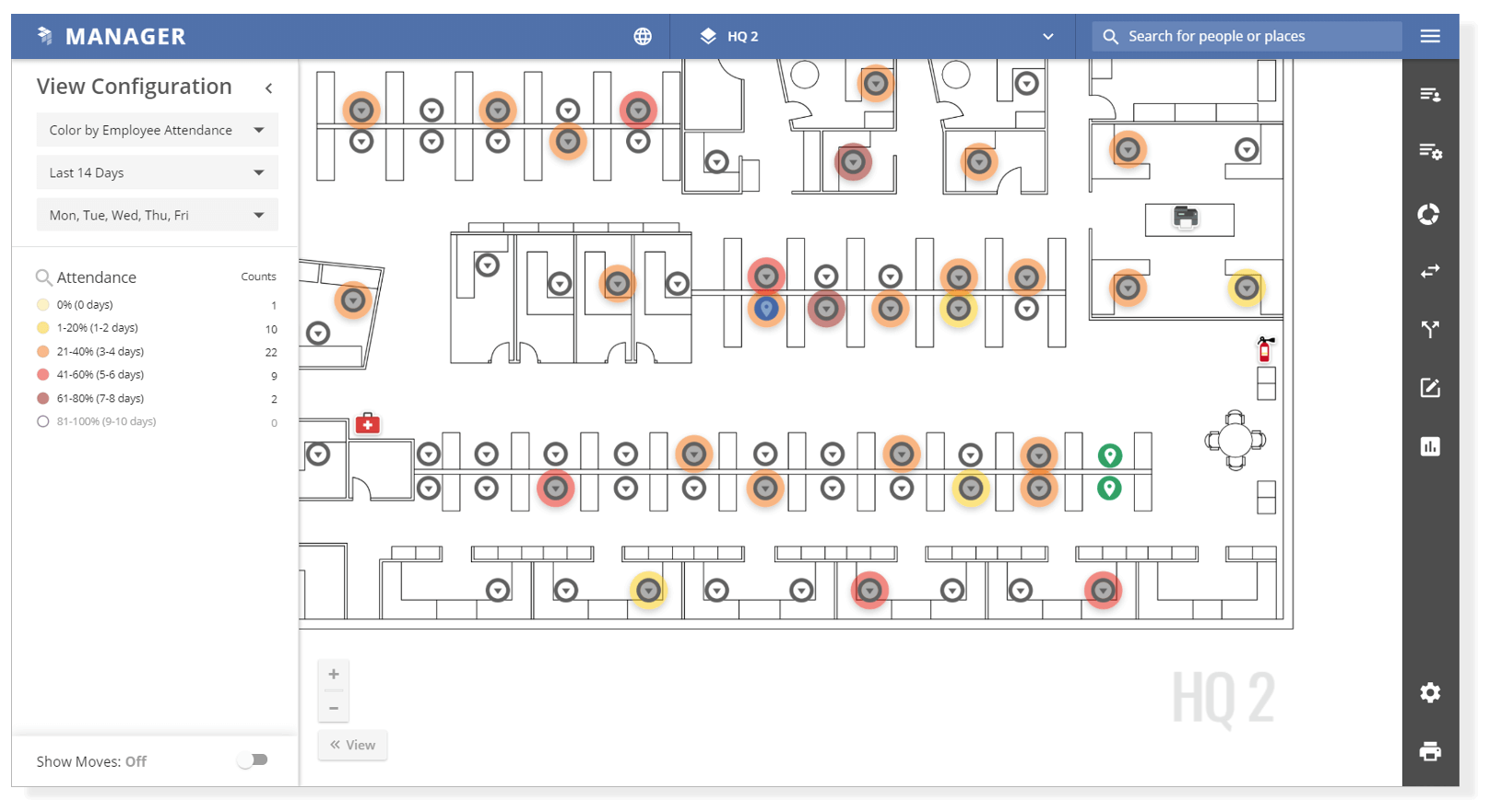Reopening your office in a post-COVID-19 world requires insights gathered from workplace analytics. Without this data, returning to work in the physical office will be difficult.
Planning your company’s return to the office comes with its own set of unique challenges. If your company is on the larger side, this can be an even bigger undertaking—more employees mean more logistical obstacles to figure out. But with the right insights, tools, and workplace analytics, it can be a much smoother process.
Below, we’re looking at how facility managers can best use analytics to plan their company’s return to the physical workspace in the safest and efficient way possible.
Why facility managers need data to plan the transition back into the office
No matter the size of your company, transitioning back into the office in a post-COVID world is something that should be done with the utmost care and caution. Without proper planning, technology, and information, your team could contract the virus back in the office.
So how can facility managers ensure the shift back into the physical office goes off without a hitch? Occupancy data and insights.
As a facility manager, you already understand the importance data plays in your day-to-day operations. But given new occupancy and space considerations, like physical distancing, it’s arguably one of the most essential tools you have on your side.
Facility management and planning software, like OfficeSpace Software, equipped with comprehensive reporting and analytics, helps FMs with things like:
- Operational reports: These reports streamline facility management processes, like monitoring building systems, monitoring facility costs, preventative maintenance, and more.
- Space utilization reports: See how your building is being used in just a few clicks. Never wonder if you’re over capacity or who’s currently in the office.
- Badge integration: If employees swipe a badge to access the building, OfficeSpace’s Badge Integration feature gives facility managers insights into employee attendance.
These reports give you a complete look at what’s happening in your facility from top to bottom—a true pulse on your office. Let’s take a closer look at each of these reports and discuss how facility managers can use them to plan.

Operational reports
When planning your office transition, operational reports are critical for many reasons. Just as it’s crucial to understand your space usage, it’s vital to know how your building is performing, too.
With operational reports, you can see key metrics to help streamline facility management processes, like the status of your building systems, preventative and predictive maintenance reports, and more. These reports give facility managers a quick, digestible overview of what’s happening in the building so they can attend to anything before employees come back.
This kind of report is especially important if your building has been vacant for an extended period. Without regular activity in your facility, things could need to be fixed or assessed—like your building’s water system or HVAC system—before you deem it safe for employees to return to the office.
Operational reports also ensure your building data hygiene is the best it can be. For example, say your team is trying to determine how to maintain normal production levels with the minimum viable number of employees present. Or if your HVAC system needs emergency maintenance. Operational reports help you determine those values and make smarter decisions faster and with more confidence.
OfficeSpace makes running and analyzing operational reports easy with our Reporting & Analytics dashboard.

Space utilization reports
Without knowing your building’s utilization potential, it will be nearly impossible to plan a safe return to the office.
As a facility manager, you’re fluent in space utilization metrics. But in a post-COVID world, you have to get creative with how you transform your office to meet health and safety standards.
Preparing a safe return to the office means far more than just rearranging furniture; you have to be positive that your space can accommodate the safest number of employees without putting anyone at risk.
Space utilization reports help facility managers see how their space and resources are being used. For example, your team can use space utilization reports to determine how best to reconfigure the office—from furniture and desks to the kitchen and other shared spaces.
Without this kind of report, it will take longer to decide how to modify your office, and it will be hard to determine if your estimates are accurate. Using software like OfficeSpace will not only provide your team with this important information, but it will also offer tools to help you make the most of your space.
Take desk booking, for example. Desk booking is an effective way to manage the number of employees you have in the office and know who’s sitting where in real-time. Desk booking is also a great way to prevent employees who haven’t yet completed their Safeguard questionnaire from checking into their desks.
Space utilization reports pull data from the desk booking feature and give you a comprehensive look at how your space is being used—or could be used once employees return.

Badge integration reports
Just as it’s important to know your building’s health and how your space can be adjusted to meet health and safety standards, so is knowing who is in the office at any given time. If your team uses badges to access different building areas, OfficeSpace’s Badge Integration tool and reporting can help you collect and analyze this valuable data.
There are several reasons why having this data on hand is vital to a successful office re-opening, including:
- Ensuring the right employees are in the office at the right time
- Tracking where in-office employees sit and where they go in the office
- Assisting with contact tracing in the event of a possible breakout
- Understanding how your space is being used in real-time to help you optimize the office
With Badge Integration, you can see who arrived at the building, perform a contact tracing analysis if COVID-19 was detected, and visualize floorplan usage using heat mapping.
What’s more, if your company uses workplace sensors for things like room detection, desk usage, and more, you can use OfficeSpace to analyze the data from your sensors. You can better understand things like if your space is being used correctly and if employees are practicing proper physical distancing practices from your sensor data.
Use data to fuel your office reopening strategy
When planning your company’s transition back into the physical office, guessing isn’t going to cut it. The key to a successful reopening strategy is data as well as knowing how to use it in a way that will best fit your company.
Data and insights that can be quickly accessed in a reporting dashboard help your team make the smartest decisions and ensure you follow the safest reopening procedures.
To learn more about how OfficeSpace can help your company plan and implement a safe return-to-office plan, contact our team today.
Photos: Campaign Creators, OSS




